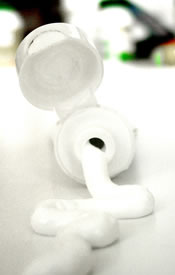Disc Problems
A disc can’t slip. But it can wedge, bulge, protrude and herniate. Chiropractic care combined with other modalities, like physiotherapy and exercise may help the symptoms.

The most serious disc problem is a prolapsed disc in which the soft center ruptures and leaks.
Space for Nerves
The disc is a special cartilage between the bones of your spinal column. It attaches to the vertebra above and below it. This creates the separation between spinal bones so pairs of nerves can exit the spine.
Turning and Bending
Each spinal disc has a jelly-like “ball bearing” core that is contained by bands of fibrous tissue. Healthy discs give you flexibility for normal turning and bending. Improper lifting, slips, falls and car accidents can cause the core to shift:
Herniation - disc wedging narrows nerve openings. Obvious symptoms may not be present.
Protrusion – like a blister, the disc bulges where it is the weakest, causing nerve pressure.
Prolapse – with the cushioning and separating compromised by rupture, movement is painful.
Chiropractic combined with other modalities has been a natural solution helping people with a variety of symptoms from disc problems.

